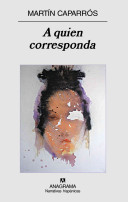 W
WA quien corresponda is an Argentine novel by Martín Caparrós. It was first published in 2008. The book is a combination of anecdotes, stories, and situations recalled by the protagonist, Carlos "el Gallego"(the Galician), in order to remember his partner, who was assassinated by the Argentinian military during the National Reorganization Process.
 W
WA veinte años, Luz is the first novel by Argentinian author Elsa Osorio, first published in 1998. The English-language version of her novel, My Name is Light, was first published in 2003.
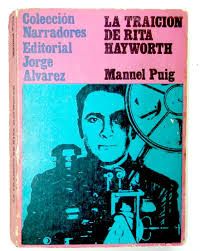 W
WBetrayed by Rita Hayworth is a 1968 novel by the Argentine novelist Manuel Puig. It was Puig's first novel.
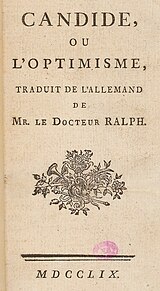 W
WCandide, ou l'Optimisme is a French satire first published in 1759 by Voltaire, a philosopher of the Age of Enlightenment. The novella has been widely translated, with English versions titled Candide: or, All for the Best (1759); Candide: or, The Optimist (1762); and Candide: Optimism (1947). It begins with a young man, Candide, who is living a sheltered life in an Edenic paradise and being indoctrinated with Leibnizian optimism by his mentor, Professor Pangloss. The work describes the abrupt cessation of this lifestyle, followed by Candide's slow and painful disillusionment as he witnesses and experiences great hardships in the world. Voltaire concludes Candide with, if not rejecting Leibnizian optimism outright, advocating a deeply practical precept, "we must cultivate our garden", in lieu of the Leibnizian mantra of Pangloss, "all is for the best" in the "best of all possible worlds".
 W
WChúcaro: Wild Pony of the Pampa (1958) is a book written by Francis Kalnay and illustrated by Julian De Miskey. It won Newbery Honor in 1959. Although a work of fiction, it contains factual information about gauchos on the pampas of South America and their way of life, including details about their work, what they wear and eat, and how they entertain themselves.
 W
WDon Segundo Sombra is a 1926 novel by Argentine rancher Ricardo Güiraldes. Like José Hernández's poem Martín Fierro, its protagonist is a gaucho. However, unlike Hernandez's poem, Don Segundo Sombra does not romanticize the figure of the gaucho, but simply examines the character as a shadow (sombra) cast across Argentine history. Unlike Martin Fierro, purely an imaginary character, Don Segundo Sombra was loosely inspired by the real life of Segundo Ramírez, a native of the town of San Antonio de Areco in Buenos Aires Province. The life of Don Segundo Sombra made it to the big screen in 1969 in an Argentine production of a film by Manuel Antín.
 W
WClaudia Amengual Puceiro is a Uruguayan writer and translator. She is a recipient of the Sor Juana Inés de la Cruz Prize.
 W
WHeartbreak Tango is a novel by Argentine author Manuel Puig.
 W
WThe Honorary Consul is a British thriller novel by Graham Greene, published in 1973. It was one of the author's own favourite works.
 W
WHopscotch is a novel by Argentine writer Julio Cortázar. Written in Paris, it was published in Spanish in 1963 and in English in 1966. For the first U.S. edition, translator Gregory Rabassa split the inaugural National Book Award in the translation category.
 W
WHow I Became a Nun by César Aira is a novel set in Rosario, Argentina, about a precocious six-year-old named César Aira. César the character, who claims to be, alternately, a boy and a girl, has a hyper-developed sense of reality, a plethora of hang-ups, and a casual relationship with the truth. Contrary to what the name suggests, it is not a story of religious awakening, and begins and ends in the same year of the life of the narrator. The Spanish version was first published in 1993. Chris Andrews’ English translation was published by New Directions in 2007.
 W
WEl Laberinto is a 1974 novel by the Argentine writer Manuel Mujica Laínez.
 W
WThe Lighthouse at the End of the World is an adventure novel by French author Jules Verne. Verne wrote the first draft in 1901. It was first published posthumously in 1905. The plot of the novel involves piracy in the South Atlantic during the mid-19th century, with a theme of survival in extreme circumstances, and events centering on an isolated lighthouse. Verne was inspired by the real lighthouse at the Isla de los Estados, Argentina, near Tierra del Fuego and Cape Horn.
 W
WThe Little School is a novel written by Alicia Partnoy, a woman who was "disappeared" during the Dirty War period of the history of Argentina. It is an account of a clandestine detention center. She tells of all the people that she met and saw through a tiny hole in her blindfold. The guards made sure prisoners of The Little School did not talk with each other or see each other. Prisoners were beaten and tortured for almost any reason and many were killed.
 W
WNight Flight, published as Vol de Nuit in 1931, was the second novel by French writer and aviator Antoine de Saint-Exupéry. It went on to become an international bestseller and a film based on it appeared in 1933. Its popularity, which only grew with the ideological conflicts of the 1930s – 1940s, was due to its master theme of sacrificing personal considerations to a cause in which one believes.
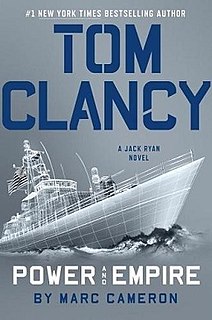 W
WPower and Empire is a political thriller novel, written by Marc Cameron and released on November 28, 2017. Set in the Tom Clancy universe, President Jack Ryan and The Campus must prevent a secret cabal heightening the tensions between the United States and China from causing a violent coup in the Chinese government. Power and Empire is Cameron's first book in the Jack Ryan series, succeeding Mark Greaney. It debuted at number six on the New York Times bestseller list.
 W
WPubis Angelical is a 1979 novel by acclaimed Argentine novelist Manuel Puig. It is perhaps Puig's work most influenced by pop culture. This can be seen in the montage imitating narrative technique, soap opera and science fiction elements. Also like other Puig works, it deals with psychological and sexual issues.
 W
WLa Reina de América is a novel by Uruguayan author Jorge Majfud. It was published by Baile del Sol in 2002.
 W
WRosaura at Ten O'Clock is a 1955 Argentine novel written by Marco Denevi. It was the author's first novel and was translated into several languages, as well adapted for theater, cinema and television. With this work, Denevi began a recognized literary career in the national and international arena. In 1964, it was translated into English as Rosa at Ten O'Clock.
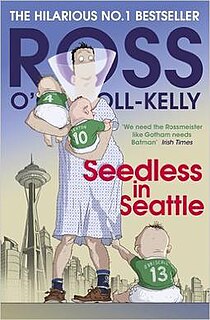 W
WSeedless in Seattle is a 2015 book by Irish author Paul Howard and is the fifteenth novel in the Ross O'Carroll-Kelly series.
 W
WThe Story of the Night is a Bildungsroman by Irish novelist Colm Tóibín. The novel interweaves the personal story of Richard Garay, a gay Argentinian man with an English mother, and the political history of Argentina through the late 1970s, 1980s and early 1990s.
 W
WTrans-Atlantyk is a novel by the Polish author Witold Gombrowicz, originally published in 1953. The semi-autobiographical plot of the novel closely tracks Gombrowicz's own experience in the years during and just after the outbreak of World War II.
 W
WThe Tunnel is a dark, psychological novel written by Argentine writer Ernesto Sabato about a deranged porteño painter, Juan Pablo Castel, and his obsession with a woman. The story's title refers to the symbol for Castel's emotional and physical isolation from society, which becomes increasingly apparent as Castel proceeds to tell from his jail cell the series of events that enabled him to murder the only person capable of understanding him. Marked by its existential themes, El Túnel received enthusiastic support from Albert Camus and Graham Greene following its publication in 1948.